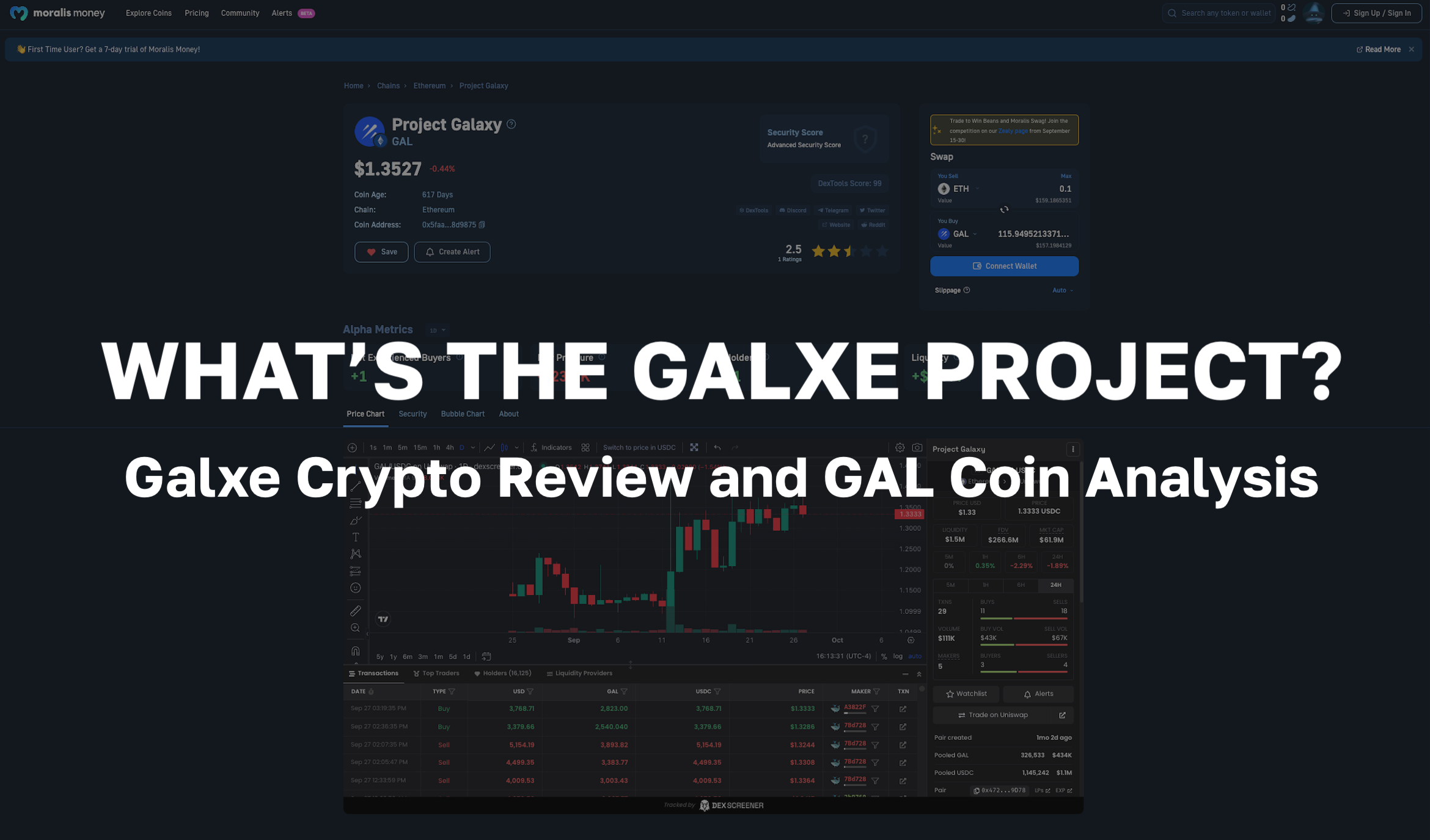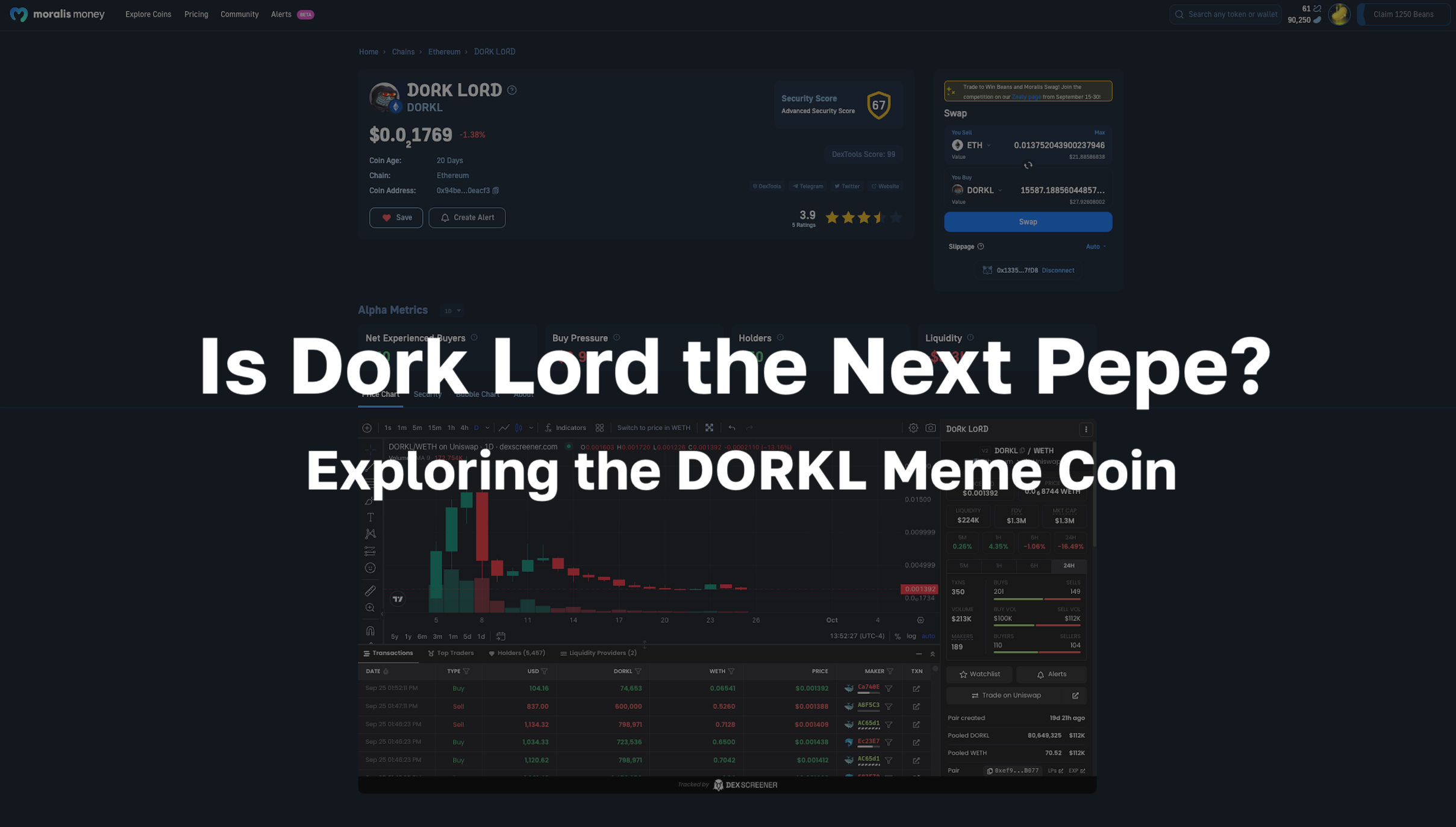The Web3 landscape is home to many interoperable blockchains. As gas prices on Ethereum have raised concerns around scaling the number one smart contract network, the debate around "Ethereum killers" features some of the latest contenders in the space to address the shortcomings of legacy blockchains. Polkadot and Cosmos have seen comparable adoption curves and feature many parallels. Also, each of these platforms is home to a thriving development community. So, if you're one of the many investors wondering, "what are the differences between Polkadot vs Cosmos?", read on!
In this "Polkadot vs Cosmos" article, we're going to compare two of the most prominent smart contract blockchains in the industry. We'll compare the underlying architecture and technology powering these two networks. Plus, we discuss the native cryptocurrencies and development frameworks of these two platforms.
For those new to the Web3 realm, please read our article from Moralis explaining how Web3 work. Furthermore, if you would like to take your knowledge further, check out the Crypto for Beginners course at Moralis Academy. Moralis Academy is the number one platform for Web3 and blockchain education. The course mentioned above teaches students about the fundamental principles of Web3 and blockchain. Also, students learn about the differences between Bitcoin, Ethereum, and altcoins. Plus, we cover smart contracts, consensus mechanisms, and much more!
In addition, we teach students how to buy, sell, trade, and store crypto safely. Join our community of over 30,000 students today at Moralis Academy! Also, save our "Why to Learn Web3 Development" and "Exploring ApeCoin (APE)" articles for later reading!
What is Polkadot?
Polkadot is a highly interoperable blockchain network created by Web3 Foundation and Ethereum co-founder Dr. Gavin Wood in May 2020. It enables users to send value and data across multiple blockchain networks that were previously incompatible. Also, Polkadot is designed to be extremely fast and scalable, thanks to the use of parachains. Parachains are parallel blockchains that remove computations from the main blockchain (Polkadot's Relay chain) to improve efficiency and prevent bottlenecking. Furthermore, the Relay chain features a cross-chain bridge that can connect Polkadot to other blockchains and databases.
The native DOT token is an essential part of Polkadot’s proof-of-stake (PoS) consensus mechanism. Holders can become validators by staking DOT and verifying transactions. In return, validators can earn a percentage of transaction fees and the newly created DOT. Also, DOT is a governance token. It gives holders the right to vote on proposals to make changes to the protocol.
Because parachains take so much computation away from the Relay chain, the Polkadot network can process more than 166 transactions per second (TPS). This is significantly more than the 30 or so TPS on Ethereum and seven on Bitcoin. The Polkadot network expands by adding new parachains, which are sold by auction. Auction winners lock up an amount of DOT as a bond throughout the lease of the parachain for up to 96 weeks. Also, the Polkadot network is designed to get faster as more parachains are added.
The Relay chain takes care of consensus and transactions, whereas parachains are “application-specific blockchains” with their own logic and bespoke features.
Relay Chain, Parachains, and Parathreads
Polkadot's Relay chain links every blockchain product and decentralized application (dapp) within the Polkadot ecosystem. Parachains are independent blockchains that run in parallel to the Relay chain. Parathreads allow parachains to temporarily host multiple applications without the need for an auction. Furthermore, each parachain and parathread inherits the security of the Relay chain.
To learn more about the Relay chain, parachains, and parathreads, check out the Polkadot 101 course at Moralis Academy. Also, this course teaches students about other fundamentals, including on-chain governance, the Polkadot treasury, and Polkadot.js. Take your blockchain education to the next level with Moralis Academy!
Kusama
Kusama is a public blockchain network and pre-production environment that emulates real-life conditions on Polkadot. Although Kusama is an independent blockchain, projects can use it to test early versions of applications using the native KSM token before deploying on Polkadot. Furthermore, Kusama operates using a flexible set of rules that gives developers a flexible environment for finalizing designs. Plus, the platform mimics the architectural design of Polkadot, including parachains, parathreads, and the Relay chain.
What is Cosmos?
Cosmos is a customizable, interoperable, cross-chain blockchain network known as an "internet of blockchains. The Cosmos network was created by Jae Kwon and Ethan Buchman in 2014 with the help of the Swiss non-profit Interchain Foundation (ICF). Also, Cosmos provides open-source tooling to create an ecosystem of blockchain networks (zones) that can share data and value in a decentralized manner without friction.
There are three core layers to the Cosmos network. First, the application layer is responsible for processing transactions and updating the state of the network. Second, the networking layer facilitates cross-chain communications between zones. Third, the consensus layer allows nodes to agree on the current state of the network. These layers are connected via a series of open-source tools and protocols that make up the Cosmos ecosystem.
Cosmos Hub connects each zone. Further, Cosmos Hub maintains a decentralized record of transactions for each zone. Moreover, it is secured by the native ATOM token that plays a crucial role in securing the network via the tendermint proof-of-stake (PoS) consensus mechanism. Also, Cosmos can process up to 10,000 transactions per second (TPS).
Tendermint
Tendermint BFT is an algorithm at the very core of the Cosmos network. The tendermint BFT (byzantine fault tolerance) engine allows transactions to be processed even when some of the nodes in the network fail to respond or provide false information. Also, tendermint enables Cosmos developers to create bespoke blockchain networks without building them from scratch.
Each Cosmos node uses the tendermint BFT algorithm as part of the Cosmos software that secures the network. Tendermint BFT uses the ABI (application blockchain interface) protocol to connect to various applications in different zones. Furthermore, the tendermint core governance mechanism allows each node in the network to sync with one another.
Cosmos Hub and Zones
Cosmos Hub was the primary blockchain to launch on the Cosmos network. It serves as the cornerstones between independent blockchains known as zones. Every zone has customizable parameters that allow developers to create new token economies and decide how to authenticate transactions. Also, Cosmos Hub monitors the state of each zone. Moreover, the inter-blockchain communication protocol (IBC) allows information to pass freely between zones.
Cosmos SDK
The Cosmos SDK (software development kit) application layer provides open-source tools that make it easy for developers to create their own independent blockchain networks on Cosmos. It provides pre-made templates and custom modulus to remove much of the legwork from development. Also, it enables developers to launch projects on the Cosmos testnet and collate feedback before launching on the public mainnet.
The Cosmos SDK allows developers to connect blockchain protocols to the Cosmos mainnet via inter-blockchain communication (IBC) to attract liquidity and grow a user base. In addition, the Cosmos SDK enables developers to translate prominent programming languages such as Java and C++ into a Cosmos-friendly language.
If you're a developer and want to save time on your project, check out the Moralis SDK. This advanced Web3 toolkit provides professional backend infrastructure templates to help you save time and focus on creating sleek and user-friendly dapps with minimal friction using just a few lines of code.
Polkadot vs Cosmos - What is the Difference?
Both Polkadot and Cosmos are highly interoperable cross-chain networks. Many refer to Polkadot as “the blockchain of blockchains”, while Cosmos is dubbed “the internet of blockchains. Both networks enable developers to create bespoke blockchain networks and serve as hassle-free launchpads for new projects. Also, both networks inherit their security from a PoS-based consensus mechanism and a top-tier native cryptocurrency.
According to CoinGecko, and at the time of writing, the Cosmos token (ATOM) trades at around $14.97 and is down about 66% from its all-time high of $44.45 in January 2022. Polkadot (DOT) is trading at around $12.19, down almost 78% from its all-time high of $54.98 in November 2021. Furthermore, DOT has a market cap of $13.5 billion, whereas ATOM has a market cap of 4.3 billion.
One of the key advantages Polkadot has over Cosmos is the unified security across the network. Independent blockchains that connect to Cosmos Hub do not have uniform security, whereas each Polkadot parachain shares the same security as the Relay chain. This shared security model is beneficial for developers as it enables them to launch projects quickly and securely.
Developers on Cosmos are responsible for configuring their own security procedures. While this allows for a greater degree of flexibility, it does mean that developers have more to consider. While Polkadot has a larger development community, a total number of unique accounts, and numerous successful projects built on top of it, Cosmos is quickly catching up.
Despite this, both platforms aim to promote and encourage the development of decentralized applications (dapps).
Polkadot vs Cosmos
Both protocols offer an interface that allows various state machines to communicate with one another. Polkadot uses a sharding model to facilitate this, whereas Cosmos uses a bridge hub model. The sharding model allows every parachain to share its state with the entire network. Conversely, each tendermint chain within the Cosmos ecosystem has an individual state and validator community. Also, Polkadot connects to external blockchains via bridge parachains. Similarly, Cosmos achieves this using external chains called "peg zones".
Development Framework
Both platforms feature smart contract support for WebAssembly (Wasm) and Ethereum Virtual Machine (EVM). Polkadot uses Substrate and Rust for developing parachains, while developers can create Cosmos chains in "Go" using the Cosmos SDK. Substrate has around 40 different modules and templates to expedite the development process, whereas the Cosmos SDK has around ten.
Staking
The Cosmos (ATOM) and Polkadot (DOT) tokens play similar roles in their respective ecosystems. Holders can stake each token to participate in governance. Also, holders can stake their tokens to become a validator or stake with another validator to validate transactions.
Polkadot validators are selected using a nominated proof-of-stake (NPoS) mechanism. Cosmos Hub uses bonded proof-of-stake, a variant of delegated PoS, for validator selection. Polkadot NPoS consensus requires all validators to have an equal weight in consensus across parachains. Plus, validator rewards are tied to specific activities and not determined by stake size. This incentivizes the network to select validators with smaller stakes.
On Cosmos, those who stake bond the ATOM token and receive rewards proportional to their stake. Also, stakers that abstain from governance in the Cosmos network have their voting power assumed by other validators. However, Polkadot governance is separated from the nomination of validators.
Polkadot vs Cosmos: What is the Difference? - Summary
Both Polkadot and Cosmos attempt to unify the blockchain ecosystem by providing a highly interoperable set of tools for creating bespoke blockchain networks. Although both networks have seen a huge surge in adoption, Polkadot appears to be the most established of the two. Also, Polkadot uses a shared security model for parachains, whereas transactions on Cosmos zones rely on trust between sending parties and have independent security guarantees.
Despite the differences, both platforms aim to provide a fast, cost-effective, scalable alternative to Ethereum, the current number one smart contract blockchain. Each is home to a diverse ecosystem of decentralized protocols and services that are forming the foundations of the Web3 landscape. Furthermore, both Cosmos and Polkadot are helping to reduce the carbon footprint of the blockchain industry by using PoS consensus rather than the energy-intensive PoW consensus. In short, after reading this "Polkadot vs Cosmos" article, you should have a clear understanding of the key differences between these leading cross-chain blockchain networks.
If you want to become a blockchain developer but have no coding experience, check out the JavaScript Programming for Blockchain Developers course at Moralis Academy. This course teaches students how to build a decentralized exchange (DEX) from scratch using JavaScript. Start your blockchain journey today with Moralis Academy!
Also, don’t forget to follow us on Twitter @MoralisAcademy! We’d love to hear your thoughts about this “Polkadot vs Cosmos” article. In addition, check out our “Polkadot vs Cardano” article to further expand your blockchain and Web3 knowledge!




